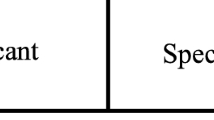Abstract
In the rapid development of current wireless communication systems, how to effectively utilize the limited system spectrum to provide the high-speed data rate service becomes a very critical issue for the system operators. To improve the utilization efficiency of the wireless spectrum, the cognitive radio (CR) had been proposed currently. The key issue of applying the CR technique successfully is how to sense exactly and quickly whether or not the primary user exists, and looking for the spectrum holes to provide the secondary user. In this paper, an energy-based maximum likelihood (ML) spectrum sensing method for the CR is proposed. The proposed method avoids the troublesome calculation of the required threshold and has almost the optimal performance for the conventional energy-based method. Besides, incorporated with the double threshold, an extension of the proposed ML method is also provided to speed up the sensing period without degrading the detection performance.









Similar content being viewed by others
References
FCC. (2002). Spectrum policy task force report. In Proceedings of the Federal Communications Commission (FCC’03). Washington, DC, USA.
Mitola, J., & Maguire, G. Q, Jr. (1999). Cognitive radio: Making software radio more personal. IEEE Personal Communications, 6(4), 13–18.
Yarkan, S. (2015). A generic measurement setup for implementation and performance evaluation of spectrum sensing techniques: Indoor environments. IEEE Transactions on Instrumentation and Measurement, 64(3), 606–614.
Zeng, Y., Liang, Y.-C., Hoang, A. T., & Zhang, R. (2010). A review on spectrum sensing for cognitive radio: challenges and solutions. EURASIP Journal on Advances in Signal Processing 2010, 2010(1), 1–15.
Yucek, T., & Arslan, H. (2009). A survey of spectrum sensing algorithms for cognitive radio applications. IEEE Communications Surveys and Tutorials, 11(1), 116–130.
Sansoy, M., & Buttar, A. S. (2015). Spectrum sensing algorithms in cognitive radio: A survey. In IEEE International Conference on Electrical, Computer and Communication Technologies (ICECCT).
Yang, G., et al. (2015). Cooperative spectrum sensing in heterogeneous cognitive radio networks based on normalized energy detection. IEEE Transactions on Vehicular Technology,. doi:10.1109/TVT.2015.2413787.
Nair, P. R., Vinod, A. P., & Krishna, A. K. (2010). An adaptive threshold based energy detector for spectrum sensing in cognitive radio at low SNR. In IEEE International Conference on Communication Systems (ICCS), (pp. 574–578) November.
Xie, S., Shen, L., & Liu, J. (2009). Optimal threshold of energy detection for spectrum sensing in cognitive radio. In International Conference on Wireless Communications and Signal Processing (WCSP 2009), (pp. 1–5) November.
Proakis, J. G., & Salehi, M. (2007). Digital communications (5th ed.). New York: McGraw-Hill.
Author information
Authors and Affiliations
Corresponding author
Rights and permissions
About this article
Cite this article
Li, CM., Lu, SH. Energy-Based Maximum Likelihood Spectrum Sensing Method for the Cognitive Radio. Wireless Pers Commun 89, 289–302 (2016). https://doi.org/10.1007/s11277-016-3266-0
Published:
Issue Date:
DOI: https://doi.org/10.1007/s11277-016-3266-0




